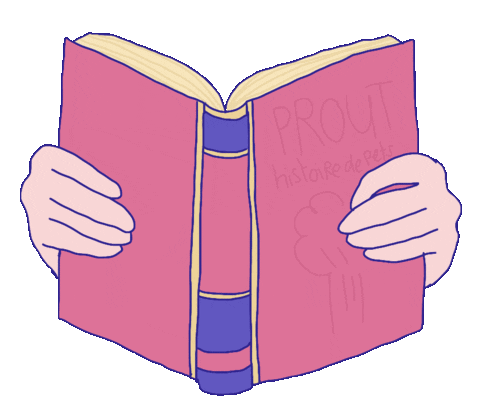Have you ever found yourself staring at a blank page, only to end up with a document filled with repetitive sentences and redundant information?
Overwriting is a common problem that many writers face, and it can hinder the clarity and effectiveness of their work.
Let’s explore the reasons why overwriting matters and provide practical tips to help you overcome this challenge.
Whether you’re a professional writer, a student, or someone who simply wants to improve their writing skills, these strategies will be valuable in your journey toward concise and impactful communication.
The Importance of Avoiding Overwriting
1. Enhances Clarity
Overwriting often leads to convoluted and confusing writing.
When you overwrite, your message gets lost in a sea of unnecessary words and repetitive phrases.
By eliminating overwritten sections, you can make your writing more concise and improve its clarity, ensuring that your message is effectively communicated to your readers.
2. Increases Impact
Writing that is concise and to the point has a greater impact on readers.
Overwriting can dilute the power of your message, making it less memorable and engaging.
By eliminating unnecessary details and focusing on the core ideas, you can create writing that resonates with your audience and leaves a lasting impression.
3. Saves Time and Effort
Overwriting can be a time-consuming process.
Spending hours trying to perfect a single sentence or paragraph not only slows down your writing progress but also drains your energy.
By learning how to avoid overwriting, you can streamline your writing process and save valuable time and effort.
Strategies to Stop Overwriting
1. Plan and Outline
Before diving into your writing, take the time to plan and outline your ideas.
This will provide a roadmap for your writing and help you stay focused on the main points.
By knowing what you want to say in advance, you can avoid the tendency to overwrite and ensure that your writing remains concise and purposeful.
2. Embrace Simplicity
One of the main causes of overwriting is the desire to impress readers with complex language and excessive vocabulary.
However, simplicity often leads to better understanding and engagement. Aim for clear and straightforward sentences that convey your message effectively.
Avoid unnecessary jargon and complicated phrases that can confuse your readers.
3. Edit Ruthlessly
Effective editing is crucial in combating overwriting. Once you’ve finished writing, take a step back and review your work with a critical eye.
Look for redundancies, repetitive ideas, and excessive wordiness. Challenge every sentence and ask yourself if it adds value to your writing.
If not, don’t hesitate to cut it out. Remember, concise writing is powerful writing.
4. Use Active Voice
Passive voice tends to make writing more wordy and less engaging.
Whenever possible, opt for active voice to convey your ideas. Active voice makes your writing more direct, concise, and energetic.
It brings clarity to your sentences and reduces the need for unnecessary words.
5. Focus on Key Information
Identify the core information or message you want to convey and ensure that it takes center stage in your writing.
Avoid unnecessary tangents and digressions that can dilute your main point.
By keeping the focus on the key information, you can create writing that is concise, impactful, and memorable.
6. Get Feedback
Seeking feedback from others is invaluable in improving your writing and identifying areas where you tend to overwrite.
Share your work with trusted friends, colleagues, or writing groups and ask for their honest opinions.
Their fresh perspective can help you identify areas that need improvement and provide insights on how to make your writing more concise and effective.
7. Practice Concise Writing
Like any skill, writing concisely requires practice. Set aside time each day to practice concise writing exercises.
Challenge yourself to convey your ideas in fewer words without sacrificing clarity.
This exercise will train your mind to think more critically about the words you choose and develop your ability to communicate efficiently.
8. Use Transitional Words and Phrases
Transition words and phrases are essential tools for creating smooth and coherent writing.
They guide readers through your ideas and help maintain a logical flow.
By using transitional words such as “however,” “therefore,” “in addition,” and “consequently,” you can connect sentences and paragraphs seamlessly, eliminating the need for repetitive explanations and unnecessary filler sentences.
9. Create an Editing Checklist
To effectively combat overwriting, create a checklist of common pitfalls to watch out for during the editing process.
Include items such as eliminating redundant words, removing excessive adjectives and adverbs, simplifying sentence structures, and checking for repetitive ideas.
Having a checklist can serve as a helpful reference to ensure that you consistently address the issues that lead to overwriting.
10. Read and Learn from Concise Writers
Reading the works of concise writers can provide valuable insights and inspiration.
Pay attention to how they convey complex ideas with clarity and brevity. Analyze their sentence structures, vocabulary choices, and overall writing style.
By studying the techniques of concise writers, you can incorporate their strategies into your own writing and improve your ability to avoid overwriting.
Overcome the Challenge of Overwriting
Overwriting not only hampers the clarity and impact of your writing but also consumes valuable time and effort.
By implementing the strategies outlined in this blog post, you can overcome the challenge of overwriting and create writing that is concise, engaging, and memorable.
Remember to plan and outline, embrace simplicity, edit ruthlessly, use active voice, focus on key information, seek feedback, practice concise writing, utilize transitional words, create an editing checklist, and learn from concise writers.
With consistent practice and a mindful approach to writing, you can break free from the habit of overwriting and deliver messages that captivate and resonate with your readers.









